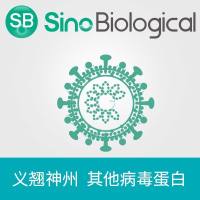Development and Characterization of Lyophilized DNA Vaccine Formulations
互联网
556
The potential applications of using plasmid DNA for immunization and other gene therapy approaches have been discussed in an increasing number of publications in the past few years. Injection of mouse muscle with naked DNA (plasmid DNA in saline) resulted in significant episomal expression from a number of encoded reporter genes such as firefly luciferase, chloramphenicol acetyltransferase, and β-galactosidase (1 ). DNA vaccination has been shown to induce neutralizing antibodies against the gene product, helper T-cell responses of the Th1 phenotype, and cytotoxic T lymphocyte responses (2 ). Vaccination with plasmid DNA stimulates immunogenicity and provides protection against various infectious diseases in pre-clinical animal models. Examples include hepatitis B in chimpanzees (3 ), bovine herpes virus in mice (4 ), influenza A virus in ferrets (5 ), human immunodeficiency virus in rhesus monkeys (6 ), Mycobacterium tuberculosis in mice (7 ,8 ), malaria in mice (9 ,10 ), and genital herpes simplex virus in guinea pigs (11 ). Recently, DNA vaccines for the protection against influenza (Merck Research Laboratories, Rahway, NJ), malaria (Vical Inc., San Diego, CA), and HIV (Apollon Inc., Philadelphia, PA), have entered phase I human clinical trials. Rapid progress has been made in the areas of adjuvants for DNA vaccines (12 ), route of immunization (13 ), industrial scale fermentation and pharmaceutical grade purification (14 ). One major interest in the commercial development of DNA vaccines, especially for developing countries, is to increase DNA vaccine stability at room temperature, to reduce the requirement for costly cold storage, and to extend product shelf-life.






